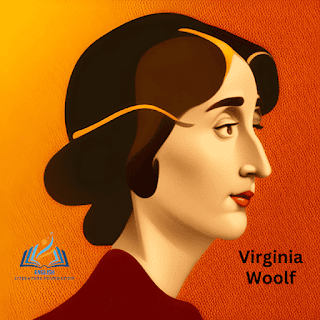Modernism c.1901 to 1939: A Detailed Guide
Modernism is a cultural, artistic, and intellectual movement
that emerged in the early 20th century and lasted until the outbreak of World
War II. It is marked by a radical departure from traditional forms and a
celebration of innovation, experimentation, and the avant-garde. In this
article, we will explore the key characteristics, influences, and developments
of Modernism c.1901 to 1939.
What is Modernism?
Modernism is a multifaceted movement that emerged in the
early 20th century as a response to the rapidly changing social, political, and
cultural landscape of the time. It encompasses various forms of artistic
expression, including literature, visual arts, music, architecture, and design.
The movement is characterized by a rejection of traditional forms and a focus
on experimentation, abstraction, and innovation.
The Characteristics of Modernism
The characteristics of Modernism are diverse and complex,
but they share a common thread of departure from traditional forms and norms.
Some of the key features of Modernism include:
- A
focus on innovation and experimentation
- A
rejection of traditional forms and structures
- An
emphasis on individualism and subjectivity
- A
celebration of the avant-garde and the new
- A
fascination with technology and the industrial age
- An
interest in the subconscious and the irrational
- A
rejection of the past and a focus on the present and future
The Influences of Modernism
Modernism was influenced by a wide range of social,
cultural, and intellectual factors. Some of the key influences include:
- The
rapid pace of technological and scientific progress
- The
trauma of World War I and the disillusionment that followed
- The
rise of mass culture and consumerism
- The
emergence of new fields of study, such as psychology and anthropology
- The
development of new artistic movements, such as Cubism, Futurism, and Expressionism
Modernism in Literature
Modernist literature is characterized by its rejection of traditional narrative structures and its emphasis on fragmentation, discontinuity, and subjectivity. Some of the key writers of the Modernist period include James Joyce, Virginia Woolf, T.S. Eliot, and Franz Kafka. Their works often explore themes of alienation, disillusionment, and the breakdown of traditional values.
Modernism in Art
Modernist art is marked by a rejection of traditional forms
and a celebration of experimentation and abstraction. Some of the key artists
of the Modernist period include Pablo Picasso, Wassily Kandinsky, and Marcel
Duchamp. Their works often incorporate new materials and techniques, and
explore themes of the subconscious, the irrational, and the primitive.
Modernism in Architecture
Modernist architecture is characterized by its emphasis on
functionality, simplicity, and the use of new materials and technologies. Some
of the key architects of the Modernist period include Le Corbusier, Ludwig Mies
van der Rohe, and Frank Lloyd Wright. Their buildings often feature clean
lines, open spaces, and an absence of ornamentation.
Modernism in Music
Modernist music is marked by its rejection of traditional
tonality and its emphasis on dissonance, atonality, and experimentation. Some
of the key composers of the Modernist period include Arnold Schoenberg, Igor
Stravinsky, and Claude Debussy. Their works often incorporate new instruments
and techniques, and explore themes of abstraction and the irrational.
Legacy of Modernism
The legacy of Modernism is still evident in contemporary
art, literature, and culture. The movement's focus on experimentation and
individual expression continues to influence artists and writers today.
Additionally, Modernism challenged traditional ways of thinking and paved the
way for further artistic and cultural movements that followed.
FAQs
1. What is Modernism?
Modernism is a cultural and artistic movement that emerged
in the early 20th century. It was characterized by a desire to break away from
traditional techniques and styles, and instead, focus on the expression of
individual creativity and emotion.
2. What are the key features of Modernism?
The key features of Modernism include a focus on individual
expression, experimentation with form and language, and a desire to break away
from traditional techniques and styles.
3. Who were some of the key figures of Modernism?
Some of the key figures of Modernism include artists such as
Pablo Picasso and Wassily Kandinsky, writers such as James Joyce and Virginia
Woolf, and architects such as Le Corbusier.
4. What is the legacy of Modernism?
The legacy of Modernism is still evident in contemporary
art, literature, and culture. The movement's focus on experimentation and
individual expression continues to influence artists and writers today.
5. How did Modernism influence the 20th century?
Modernism challenged traditional ways of thinking and paved
the way for further artistic and cultural movements that followed. It also had
a profound impact on the development of modern art, literature, and
architecture.
6. What is the difference between Modernism and
Postmodernism?
While Modernism sought to break away from traditional
techniques and styles, Postmodernism embraced them, often with a sense of irony
and self-awareness. Additionally, Postmodernism often questioned the grand
narratives and ideologies that Modernism had relied upon.
Conclusion
In conclusion, Modernism was a cultural and artistic
movement that emerged in the early 20th century. It was characterized by a
desire to break away from traditional techniques and styles and instead focus
on the expression of individual creativity and emotion. The movement had a
profound impact on the development of modern art, literature, and architecture
and its legacy is still evident in contemporary culture.

